What We’re Loving — Summer 2014

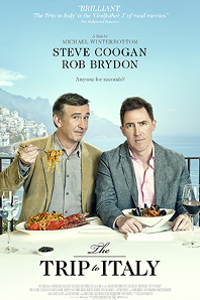
I greatly enjoyed The Trip to Italy, the sequel to Steve Coogan and Rob Brydon’s 2010 comedy (/documentary/drama/art film/.etc), The Trip. The latest rendition jumps into the same outline as the original and immediately notes the classic mistake of trying to replicate a masterpiece. If anything, it’s an improvement. What was experimentation in the first is confident artistry in the second. The kind of improvised humor and emotional, slow scenes that appeared in the first are even stronger in the second, as though the filmmakers were inspired by the success to follow through, not pulling any punches. The cinematography and music are absurdly good (aided by Italian coastal locales), and create a sense of transportation to a strange, fascinating world of culture, humor and friendship. It’s an experience, really. It’s hard to do any of it justice, especially Brydon’s performance. Fantastic movies. Go see ‘em.
— Justin Poser
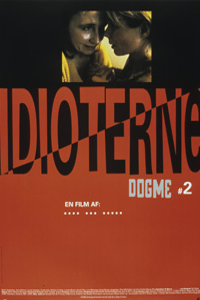
Before he was banned from the Cannes Film Festival for making a Nazi joke (Melancholia, 2011), faced global shock and censure for filming unsimulated sex scenes (Nymphomaniac, 2013), and generally established himself as one of the most controversial avant-garde filmmakers of our time, Danish director Lars von Trier made a low-budget film called The Idiots. Adhering rigidly to the rules of the Dogme 95 filmmaking movement — handheld camera, no filters, no external props — The Idiots follows a group of listless suburban Danes as they pretend to be developmentally disabled in public, all in order to release their “inner idiot”. The harsh, unromantic lighting and the naturalistic camerawork produce an unnerving realism; the scenes where the group members “spass” (act out) in restaurants, in taxis, and on the street are simultaneously hilarious and cringe-worthy because of how brash and utterly unscripted they seem. Though the film entertains brilliantly as a stand-alone comedy, its real genius lies in its subtle, haunting exploration of difference and alienation in modern society. We see people stumble, recoil, and struggle to disassociate themselves as the “spassers” flail out in increasingly attention-grabbing ways. At the same time, the ever-present outside world of relationships and responsibilities begins to leak into the spassers’ tight-knit circle. Sure, they can spass in front of strangers, as a group, but what about during an important job interview, by himself, as one member is eventually challenged to do? In front of a class of students? With family? Although spassing seems like good fun, its ability to normalize childish regression and put reality on hold speaks to a deep human need to break out, if only for a few minutes, from the daily civility and politeness that we take for granted.
— Whitney Sha
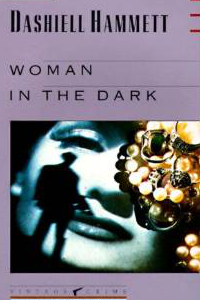
This summer I’m loving Dashiell Hammett’s novella, Woman in the Dark. A forgotten gem of the hardboiled genre, the story chronicles the flight of a mysterious woman into the house of a recently freed convict named Brazil. In about seventy-five brisk pages of clear-cutting, thrilling fiction, a model noir tale is spun. It’s so short that it can be inhaled in one, enthralling gulp. A classic.
— Harrison Blackman
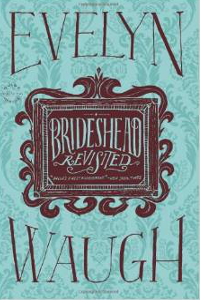
“Does your family always talk about religion all the time?”
“Not all the time. It’s a subject that just comes up naturally, doesn’t it?”
Religion pervades every part of Evelyn Waugh’s Brideshead Revisited. It hovers over every phrase, looms behind each interaction, and hangs at the back of the reader’s mind as he or she turns the page. Yet, the faith that binds together this 1945 novel, which tells the story of the relationships between the agnostic artist Charles Ryder and the members of the Flytes — the family of the Marquis of Marchmain; an ancient, noble, English Catholic family — does not take the form of assertions, propositions, and conclusions. In fact, religion appears only incidentally, as a natural aspect of the characters: the pompous brother Brideshead, a pedant worthy of the scholastics; the ailing mother, a martyr to her husband’s infidelity and her children’s eccentricities; the youngest daughter, Cordelia, straightforward and confident. The narrative of the rise and fall Ryder’s love or the younger son, Sebastian, and with the eldest daughter, Julia, which is told from the Ryder’s perspective, concerns itself little with issues of faith, at least on the surface. Rather, the religion of Brideshead Revisited is intuitive. It is the sort of faith that influences every aspect of a life, that gives meaning to every memory and everyday object. Julia, in a moment of hysterics, gives voice to it: “Mummy dying with it; Christ dying with it, nailed hand and foot; hanging over the bed in the night-nursery; hanging year after year in the dark little study at Farm Street with the shining oilcloth; hanging in the dark church where only the old charwoman raises the dust and one candle burns.” Such a faith, enfolding the lives of each of the Flytes has tremendous power. This power is evident in narrative, in the struggles of Sebastian and Julia with it. At the climactic moments, this latent faith surges onto the scene, sweeping the characters along and driving them apart. Thus, this religion, rarely seen but always felt, is the dramatic force of the novel.
Brideshead Revisited is particularly interesting because it directly confronts the modern mindset. In the novel, Ryder, an archetypal modern figure, confronts a faith that is rooted in history and tradition. Like Brideshead, the family estate from which the novel takes its name, the faith has been built up and elaborated on by generations. Ryder may try to bat it aside as “superstition and hypocrisy,” but he does fully understand it and therefore cannot address it satisfactorily. Written at a time when literature and art where describing and even celebrating the breakdown of traditional cultural norms, Waugh’s novel challenges the reader to comprehend the true nature of the Marchmain family’s Catholicism before making any statements about it. Such a challenge is relevant because to a large extend we, today’s students, have inherited the intellectual attitude of the early twentieth century. It seems natural to doubt and dismiss something that resembles the faith described above. Before making such dismissals, a reader of our generation should confront Brideshead Revisited and try to understand both the nature and the beauty of what this modern perspective brushes aside.
— Paul Fanto
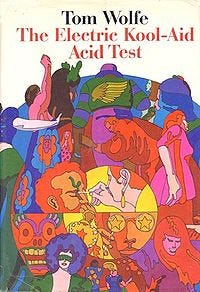
We in the 21st century cannot help but look back at the 1960s with a mixture of nostalgia for their innocence and pity for their losing it. But even if we understand the narrative (optimism yielded to cynicism, the hard crash following a years-long drug binge), we do so only in the most general of terms. In other words: you weren’t there, man. Luckily enough for us, however, Tom Wolfe was, and his The Electric Kool-Aid Acid Test is an insightful, funny, and psychedelic look back at that unique era. Wolfe tells the true story of Ken Kesey (best known as the author of “One Flew Over the Cuckoo’s Nest”) and his Band of Merry Pranksters, a group of people who travelled the country while under the influence of (massive amounts of) LSD. Kesey, who participated in many early studies on certain new drugs, was one of the first people to popularize LSD, the other notable figure being Timothy Leary. But whereas Leary, a Harvard educated psychologist, approached the drug from a solemn, spiritual standpoint, Kesey used it to (gasp) have fun. If Leary was black and white, then Kesey was a whirling mandala of Day-Glo. When not traveling in a decked-out, multicolored school bus, Kesey and his pranksters threw “acid tests,” parties that featured as their main attraction free acid, but also live music (from none other than the Grateful Dead, before they became well known), trippy decorations, and of course, Kesey himself. Though he tried to popularize a new kind of living (more in the moment, more free, more communal), and, to some extent, succeeded in creating a sort of proto-utopia in Haight-Ashbury, San Francisco, the whole thing came eventually came to an end. But the book explores the mentality of the era, making a strong case that it wasn’t just a drug-induced hallucination to believe that we could maybe all just get along, but rather a sincere and hopeful vision of a reality that never materialized.
— Elliot Eglash
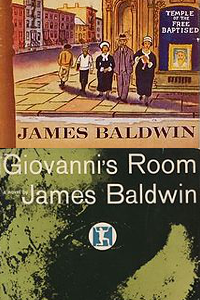
“Many of the stories her mother told meant nothing to Florence; she knew them for what they were, tales by an old black woman in a cabin in the evening to distract her children from their cold and hunger.” — Go Tell it on the Mountain
“We had our arms around each other. It was like holding in my hand some rare, exhausted, nearly doomed bird which I had miraculously happened to find.” — Giovanni’s Room
I’ve known for a long time that James Baldwin was one of those authors I “had to read” — as a student of literature, an aspirant writer, and an African-American concerned with the roles of religion and race in this country. I’d only read one of his essays about Richard Wright and a short story entitled “Sonny’s Blues.” To amend this, I biked to the library with an ugly green tote bag hanging from my handlebar and returned with Go Tell it on the Mountain and Giovanni’s Room, his first and second novels, both of which are commonly cited as classics of American letters. In the former, I found so many shades of myself that I recoiled from the bite and polish of its passages. The frame of the novel is a night in the Grimes’ family storefront church in Harlem, Temple of the Fire Baptised. Through extended flashbacks, Baldwin narrates the story of John, a 14-year old disillusioned with the religiosity of his deacon stepfather, Gabriel. He only enjoys the company of his mother, Elizabeth, a young preacher named Elisha, and his new baby sister (he disdains his other two siblings, one of whom is the source of Gabriel’s pride). The novel is semi-autobiographical, but it speaks to a tradition of black spirituality with which I’ve struggled in recent years. How does one create an independent self in the shadow (and, as I think Baldwin suggests, cage) of one’s supposed cultural heritage? Baldwin integrates Biblical verses into the fabric of his story as seamlessly as Augustine did in his own Confessions. At times these passages linger, and though I think this is one of the text’s weaknesses, it is not necessarily a fault of Baldwin. It comes down to a matter of taste and one’s sensitivity to narrative progression. His prose is, by virtue of its economy, vigorous; it rings with the authority of ancient scribes committing some vast tale to memory. Through this lens, Baldwin shares a coming-of-age story whose conclusion is tragic, though perhaps not obviously so.
I’ve only recently begun Giovanni’s Room, which is refreshingly divergent from Baldwin’s debut. Whereas the latter was more clearly personal (and therefore marked by the attendant strengths and shortcomings of that decision), this story is told from the perspective of a White-American in Paris. While there, David meets and begins an affair with an Italian bartender, the titular Giovanni. Baldwin is always addressing issues of identity, and I think it’s interesting that he felt he could only write this book in Europe, where reactions to the author’s homosexuality might have been more tame than those of his Amerian readership. Giovanni’s Room bristles with charisma. We are told at the onset that something horrible will happen to Giovanni, but Baldwin so masterfully establishes the eponymous character as a contented man that it is difficult to project his decline. The book is filled with the sad sexual energy of a man yet unwilling to embrace another — that is, David, not Giovanni. Already issues of masculinity and corporeality arise. I’m eager to see where Baldwin will go next. On good faith I’ve got one of his short story collections, Going to Meet the Man, in my reading queue.
— Aaron Robertson

This summer, I loved the warmth of Paul Jamieson’s guidebook, Adirondack Canoe Waters: North Flow. This season was my first as a canoe guide in Upstate New York’s Adirondack Park, paddling the region’s most popular lakes, lined with summer cottages, and portaging through some of the state’s most remote backcountry. A guide must know the land, and my first weeks I was quite literally shaking in my boots, scanning maps charting the contours of land utterly alien and leading groups around river bends, clueless to what the river offered behind the point of pines. I figured it out for myself. Time and the pounding cycle of trek guide life made the land familiar. One of the last weekends, I skimmed the bookshelves belonging to a fellow guide’s grandmother in her Saranac lake house. In an unadorned evergreen jacket, I found the original 1975 edition of Jamieson’s book. I flipped through the guide to find names that I knew: the Saint Regis Wilderness, the Raquette River, the Fulton Chain of Lakes. Jamieson offered the history and myth of the Adirondack waterways with his own narratives of wonder and folly: how legendary Abenaki guide Mitchell Sabattis allegedly escorted the first Europeans down the perilous Raquette Falls, and how Jamieson himself hours lugging his gear around the falls on a shameful “tripled” portage. Paul Jamieson is the Adirondack’s greatest literary champion, having written and curated many volumes of personal reflection and criticism about the region. The guidebook strips all higher intention away to see Jamieson at his most elemental: he is a man who knows the land, telling you what he knows. I could call myself an Adirondack guide, a peer, when I could sit down with Jamieson’s book and meet his words in familiar conversation.
— Will Lathrop